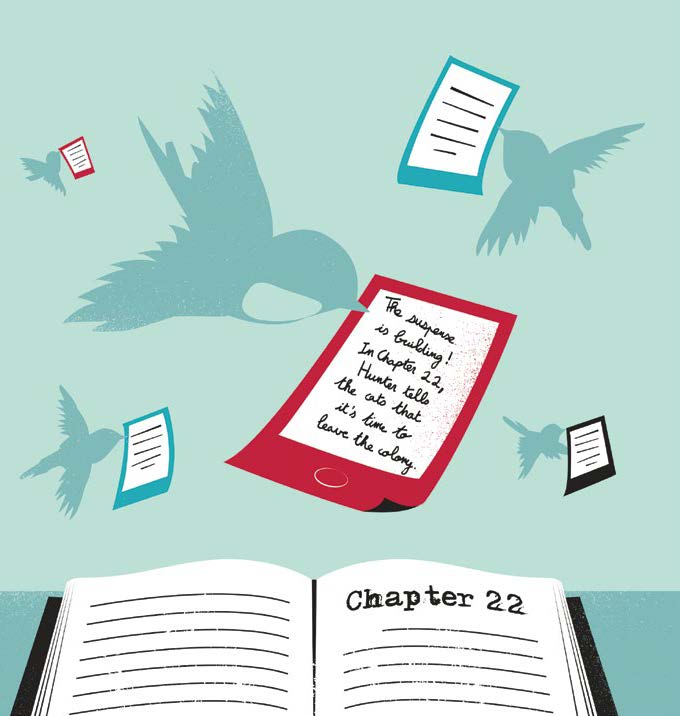Share this page
Illustration: Gaëtan Heuze

Breathe new life into chapter summaries with the help of a sticky note and a tinge of technology. After every read-aloud, my Grade 5s know that a written recap will follow. This hasn’t always been a favourite activity but I’ve found a way to change that. What’s my trick? I distribute these great iPhone-shaped sticky notes from the dollar store (or draw a cellphone on a normal sticky note) with just enough room to fit their synopsis. I call them “Chapter Tweets” since students will have to choose their words carefully and keep their character counts to a minimum. They incorporate their voice and opinions in each, and with limited space, they learn the value in being clear and concise. Use this technique for any topic; it consolidates learning at the end of a class plus students LOVE to read their friends’ “tweets” because they feel oh-so grown up while doing it! It’s amazing how something so simple can be so engaging.
—Laura Segreto, OCT
Dewson Street Junior PS, Toronto
➞ Have a classroom tip to share? Send it to us at ps@oct.ca and if we choose to publish your helpful tip in the September issue, you’ll receive a $50 Staples gift card!
While you’re at it, be sure to check out our Teacher Tip research archive at bit.ly/16mofMi.
Promising new research suggests a relationship between marks and melodies. Karen Ludke, a post-doctoral researcher at the University of Edinburgh, conducted a study that explores how music affects foreign-language learning. She found that adults who listen to and then sing phrases in an unfamiliar language remember more of the new language than those who simply spoke them.
Songs could help because they engage our memories and provide an extra cue for recalling words and phrases. Researchers hope to probe further, so that they can fully understand the song-language link. “Hopefully we can investigate other questions,” says Ludke, “like if certain melodies help more than others.”
So set your next language lesson on colours, days of the week, the four seasons or everyday expressions to music, and watch your students soak up these new terms faster than ever. As for the 99.9 per cent of us who just aren’t gifted with perfect pitch, let’s hope that a warbled tune proves to be better than none at all.
Find out more about this research and access a range of related resources by visiting karenludke.co.uk. —Stefan Dubowski
Want to give students some de l’aide in French class? (Or in Mandarin, Spanish or any other language class?) Involve them in games. Researchers at Gazi University in Turkey conducted a study that confirms what many already instinctively know — games help children learn. In the study, students who used riddles and other play exercises in French classes scored higher on their tests than those who didn’t. Researcher Melek Alpar surmises that play engages and relaxes students. When they are having fun, children will instinctively feel less of the anxiety that gets in the way of their learning.
If you think bilingual children need twice as much time to master their two native languages, think again. According to Science magazine, bilingual children learn two languages just as quickly as monolingual youngsters learn one. A researcher at the Hungarian Academy of Sciences in Budapest believes that when an individual is exposed to two distinct sets of speech sounds from an early age, the area of their brain that is responsible for sorting and interpreting those sounds becomes more efficient. It’s just like a muscle that gets stronger with additional work, the language processing part of the brain in multilingual youngsters manages to accomplish tasks faster because it has been exercised more.